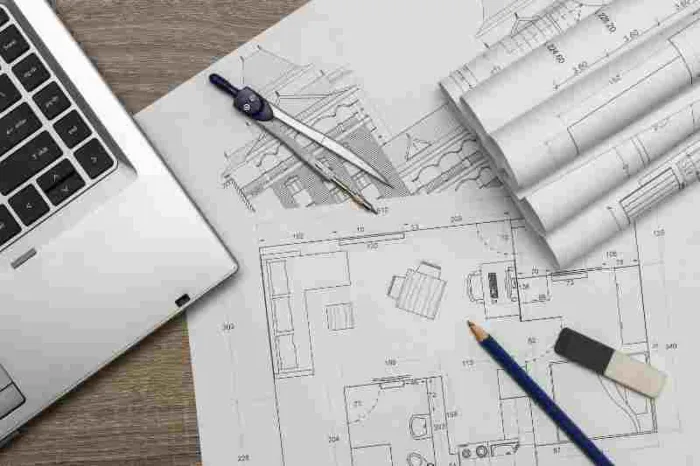Key takeaways
- Inclusive architecture is the process of designing accessible buildings that fit every person’s accessibility needs.
- Inclusive design architecture is incredibly important because it makes it possible for persons living with disability to participate in the same community.
- Five things to consider when designing accessible architecture include age, abilities, orientation and identity, reliance, and income.
- Buildings that benefit most from inclusive architecture design include student housing, multifamily housing, and commercial buildings.

The most important part of an architect’s job is envisioning the elements of a built environment in a way that others cannot. One part that people don’t often conceptualize is the art of inclusive architecture.
Designing for accessibility is integral to the developmental phase of real estate and is the backbone of inclusivity. In this post, discover what inclusive architecture means and how to achieve it
Below, we cover:
- What is inclusive architecture design?
- Why is inclusive architecture important?
- 5 things to consider when designing inclusive architecture
- What buildings can benefit from inclusive design?
What is inclusive architecture design?
Inclusive architecture is the process of designing accessible buildings that fit every person’s diverse accessibility needs. Accessible architecture strives to meet needs regardless of age, physical ability, and health.
This form of inclusive built environment was accelerated by the disability rights movement of the 1960s, presenting opportunities for architects to take accessibility and design to new heights.
Examples of inclusive architecture features include:
- Tactile surfaces. Tactile surfaces like braille, tactile maps, and textured pavement are all perfect examples of inclusive surfaces you can easily add to your designs. These make it easier for those with less sight to navigate a building without assistance.
- Flexibility. A single-experience space will not be conducive to accessibility for all, as it doesn’t account for people with diverse needs. Therefore, designing a space that is flexible enough to accommodate everyone who enters is ideal.
- Advanced tech. Technology bridges gaps and is a driving force behind successful accessible design. Things such as touchless access control, virtual reality, and ADA push buttons positively impact everyday tasks for thousands of people living with disabilities.
Why is inclusive architecture important?
Inclusive design architecture is incredibly important because it makes it possible for people living diversely-abled lives to be a part of their communities.
Imagine a time when there were buildings people couldn’t enter or technologies they couldn’t use because of their abilities. That reality is a major hindrance to cohesive living and actively bars certain people from spaces they have every right to be in.
Community is the single most important thing that keeps society safe and thriving. So, inclusive architecture is critical to a working society because it helps include everyone and leaves no one to fend for themselves.
Furthermore, an inclusively designed property with high ESG (environmental, social, and governance) scores may be an attractive perk to renters of all abilities.
5 things to consider when designing inclusive architecture
Inclusive architecture is more than just a concept; it’s a reality that many people desperately need. Below are some considerations for accessibility, equity, and inclusivity that many people don’t think about daily.
How to design inclusive architecture:
1. Age
When designing for inclusivity, age is a very relevant aspect to consider, especially regarding mobility and cognition.
It’s not uncommon to find most buildings and public spaces designed for the young and middle-aged demographics. This doesn’t take into account seniors who often use walkers, have balance issues, or have difficulty understanding high-level technology.
2. Diverse abilities
Designing according to ability can be difficult as some people don’t present the same way others do. This is why research, education, and co-designing is so important. Co-designing is the process of including the input from people with various abilities (physical and mental) for a cohesive design.
Physical ability considerations include:
- Wheelchair use
- Prosthetic use
- Visual impairment
- Audio impairment
- Light sensitivity
Mental ability considerations include:
- Stimulation sensitivity
- Confinement anxiety
- Depression
The best way to address inclusivity in mental health aspects is to reach out to someone who studies the subject. They’ll help you understand how built environments can be more welcoming to people who struggle with crowds, lights, and other stimuli.
3. Sexual orientation and Identity
Designing a space that is welcoming to everyone, regardless of sexual orientation and gender identity, is paramount in an evolving society. This is easily attained by refraining from overtly gendered designs that alienate people.
For example, gender-neutral bathrooms and fitting rooms are an easy way for commercial and retail spaces to promote architectural inclusivity.
4. Dependency
A good architectural design for inclusivity reduces the need for reliance by people with disabilities. Accessible design does this by making it easier for people to go about their everyday lives without asking for help.
For instance, designing accessible entrances means people on crutches or in wheelchairs don’t have to wait for someone to open the door for them. They can simply use their voice, motion, or even their smartphone app.
Furthermore, building accessibility means that visually impaired visitors are assisted with visual detectors and textured designs. These empower people to access, move around, and engage with their surroundings without assistance.
Reducing reliance ultimately improves the quality of life for those using inclusive buildings.
5. Income
Lastly, accessibility means that everyone can use spaces regardless of their income level. Inclusive designing shouldn’t be reserved for those with the most money. Instead, it should extend to the whole community.
From design to development:
What buildings can benefit from inclusive design?
The top building types that should have inclusive design include:
- Student housing. Student housing buildings greatly benefit from accessible design because of the number of diverse students. There will inevitably be students that don’t have the same level of capabilities as their counterparts and should have the benefit of non-reliance.
- Multifamily housing. Multifamily housing buildings are great candidates for inclusive design. Every day someone needs accessible access, mobility accommodations, and more. To ignore this aspect of multifamily design would be a disservice and will only limit the number of prospects you attract.
- Commercial buildings. Commercial buildings such as offices, retail, and hotels need accessibility designs to help consumers and employees. Ramps, elevators, and tactile surfaces are some of the easiest ways to accommodate accessibility needs.








